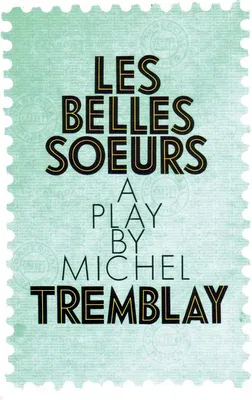Germaine Lauzon has won a million trading stamps from a department
store. Her head swimming with dreams of refurbishing and redecorating
her working-class home from top to bottom with catalogue selections
ranging from new kitchen appliances to "real Chinese paintings on
velvet," she invites fourteen of her friends and relatives in the
neighbourhood over to help her paste the stamps into booklets.
Raucous, reckless and rude, the women shamelessly share their most
secret hopes and fears, complain stridently about their friends and
relatives, fantasize wistfully about escaping the misogynist drudgery of
their lives and surreptitiously tuck most of the stamps into their
purses and clothing, self-righteously appropriating what they consider
to be Germaine's "illegitimate" good fortune.
While earlier attempts had been made to stage the realities of Québécois
life using colloquial language and a realist backdrop of working-class
Montréal, these populist hits were considered rustic and anomalous,
while "real" (Parisian) French continued to dominate theatre and "high
culture" until the end of the 1950s.
As Québec searched for a new socio-political identity and a language
that could articulate its rapidly emerging post-colonial reality
throughout the "quiet revolution," Michel Tremblay struggled to find an
authentic Québécois voice. Written in 1965, it took three years for him
get a first production of Les Belles Soeurs in 1968. Premiering at the
Théâtre du Rideau-Vert in the same year that René Lévesque founded the
nationalist Parti Québécois, this first of what was to become more than
a dozen plays in Tremblay's Cycle of Les Belles Soeurs became an
overnight success. In one fell stroke, Joual, the distinctive Québec
vernacular that had evolved over centuries since the end of French
colonial rule had been legitimized, and Michel Tremblay, much like
Chaucer in English and Dante in Italian, had become "the father of the
Québécois language."

